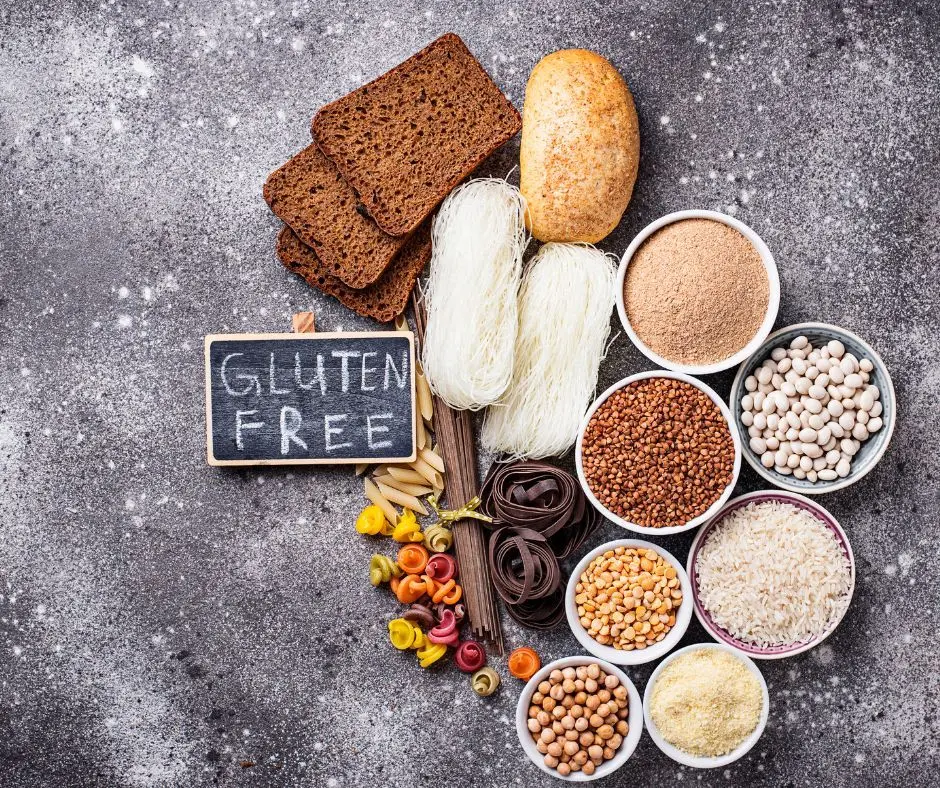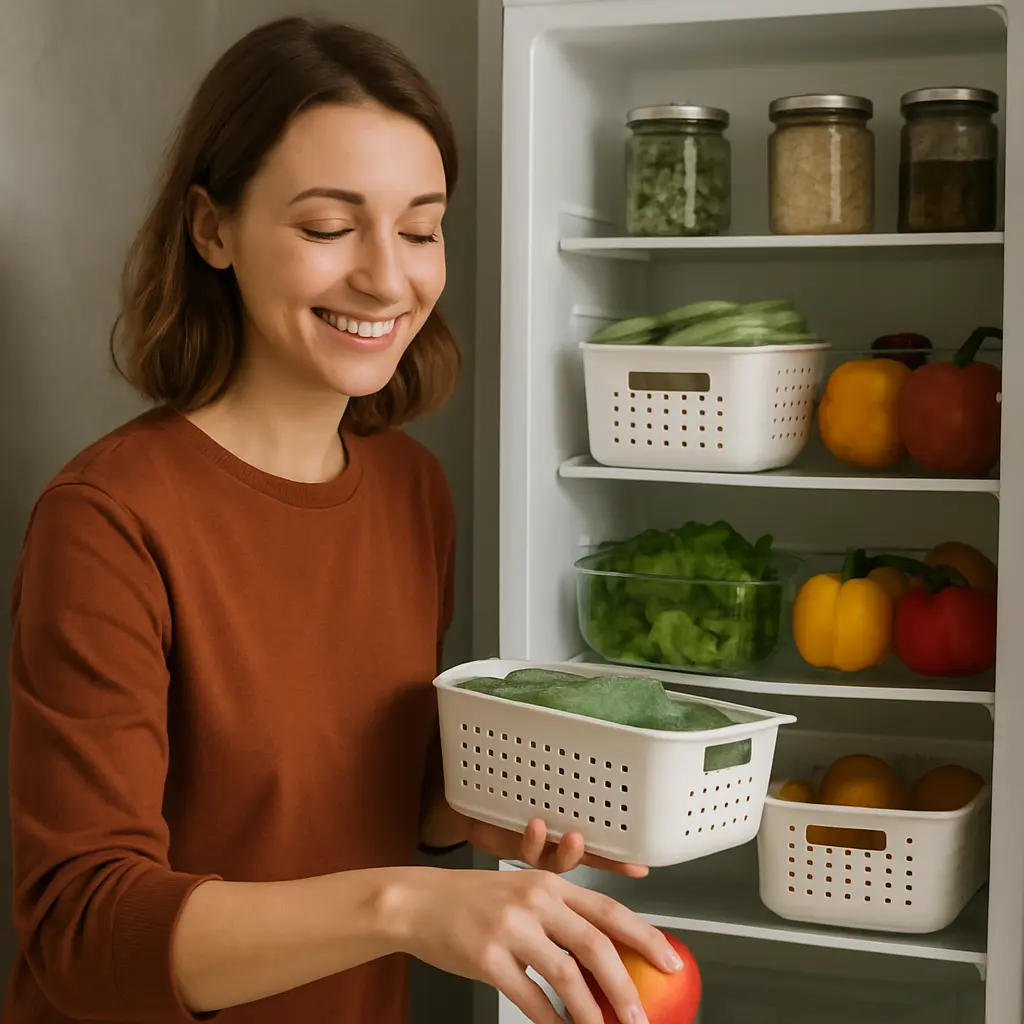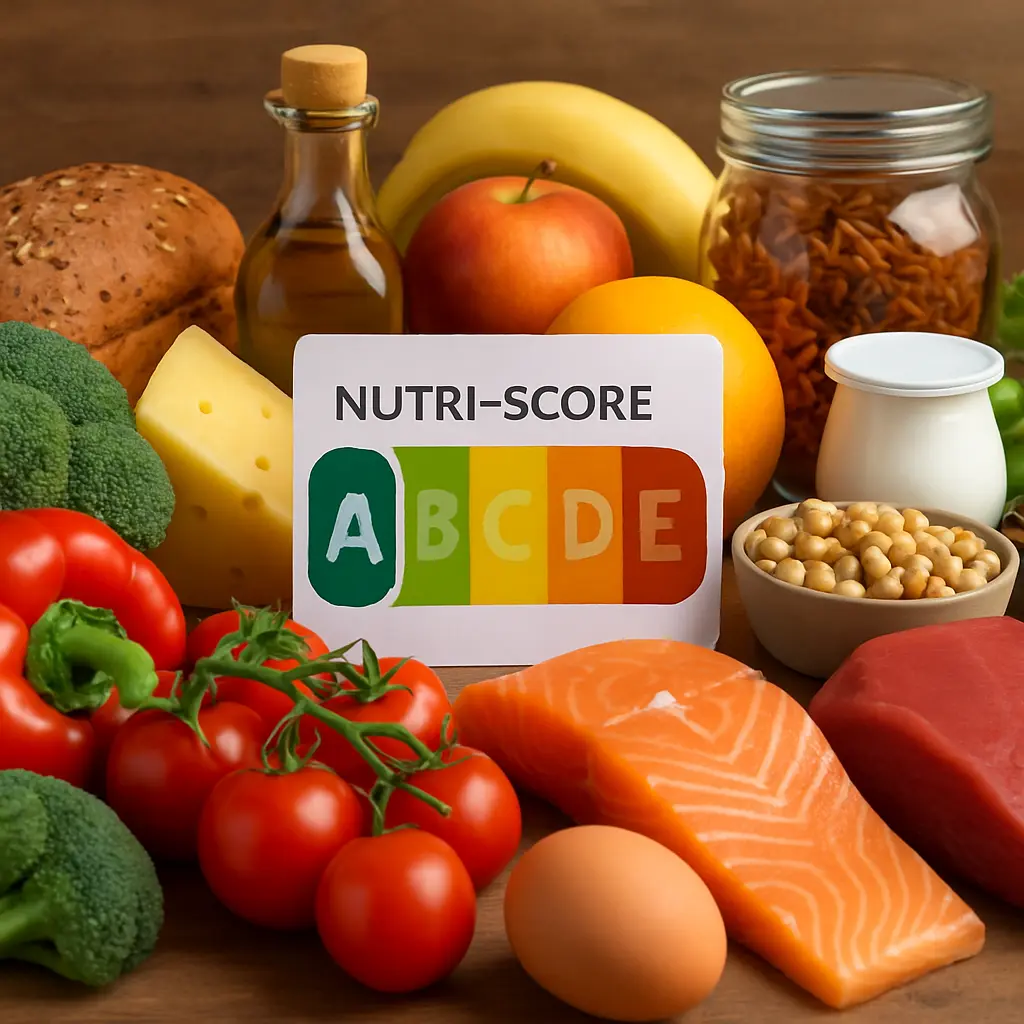The enemy on your plate - how do you recognize a food intolerance?

Kira Zabe
June 11, 2022
Many are affected, but often those affected are in the dark and are at a loss or do not even realize that they have a food intolerance. In our team, Matthias and I are affected by it. In this post, we want to show you what the body can react to and how you can interpret your symptoms.
Several times a day we consume food. Ideally at intervals of 4 to 6 hours and 2 to 3 meals per day. In this rhythm, our body has sufficient time for food intake, nutrient utilization, and digestion. However, in reality, it often looks different. Tempted by the industry, we indulge in snacks such as comfort food and mood fillers. These have little to do with 'satisfying hunger,' which is what food is actually meant for.
How do I notice which foods cause me discomfort?
This legitimate question is the most difficult to answer. When you reflect on your food intake with a food diary, you quickly realize that it's not that simple. Because often we do not eat foods individually, but combine them with each other, making it almost impossible to determine which one is responsible for possible discomfort. In addition, there is the difference between an immediate reaction and a delayed reaction, which can occur up to three days after eating. You see, this makes the whole thing even more difficult.
Lactose Intolerance
In cases of lactose intolerance, the affected individuals lack the enzyme lactase, which is necessary to break down lactose in the body. The most common symptoms can include bloating, abdominal cramps, diarrhea, nausea, flatulence, and/or a feeling of fullness. Non-specific symptoms such as headaches, fatigue, concentration difficulties, exhaustion, or rapid heartbeat are very rarely associated with food intolerance. If you want to learn more about lactose intolerance, then get informed on this page.
Milk Protein Allergy
In this intolerance, the body reacts with an immune response to the proteins in milk. These are not only found in cow's milk but also in the milk of other mammals such as goats, sheep, or horses. The body fights the foreign protein with IgE antibodies and releases histamine. This increases the prevailing level of histamine in the body. If you consume a lot of foods containing histamine, it is likely that you will also be sensitive to histamine. Milk protein allergy usually occurs in babies or toddlers. In adults, lactose intolerance is more common. However, adults can also develop a milk protein allergy. If the standard lactose test does not trigger a reaction, but you have symptoms when consuming animal milk products, a milk protein intolerance should be considered. Click on this link, to get more comprehensive information.
Fructose Intolerance
Fructose intolerance is still not well-known to many, even though one in three adults in Germany is knowingly or unknowingly affected by it. The reason for this is that many processed foods contain a large amount of artificially produced fructose. Moreover, we consume more carbohydrates than in the past. Carbohydrates are converted into sugar by the body. We cannot metabolize this excess fructose, and our body reacts to it. It is rare to establish a connection between the symptoms. In addition to the same symptoms as lactose intolerance, this intolerance can be responsible for a weak immune system, reddened skin, joint pain, low iron levels, or even cravings for sweets. Learn more about this topic here.
Sorbitol Intolerance
Similar to fructose intolerance, those with sorbitol intolerance react to sugar. However, in this case, it is specifically the sugar alcohol. In food additives, sorbitol is known as E240. It is often used to sweeten food for diabetics. However, the industry also likes to use it as a humectant or to preserve food. Normally, metabolism occurs in the small intestine. But if the metabolism is disturbed, the process takes place in the large intestine instead. Bacterial fermentation leads to increased gas production, which is perceived as bloating. As with all other intolerances, symptoms include bloating, diarrhea, abdominal pain, nausea, fatigue, and/or a feeling of fullness.
Learn more about sorbitol intolerance here.
Sucrose Intolerance
This intolerance is also among the sugar intolerances. It specifically involves reactions to table sugar or malt sugar. The most common symptoms are similar to those of fructose and sorbitol intolerance. You can learn more about this by following this link.
Celiac Disease (Gluten Intolerance)
Celiac disease is a genetically predisposed intolerance to gluten found in many types of grains. 30-35% of Germans have a genetically increased risk. However, only 2% develop the full picture of this intolerance. The onset is most commonly observed between the ages of 1 and 8 years or 30 and 50 years. Women are more frequently affected. In this case, there is a reaction to the gluten protein in the grain. This reaction causes inflammation of the intestinal mucosa, which leads to the atrophy of the intestinal villi. As a result, nutrients can no longer be properly transported into the body, leading to a nutrient deficiency and the appearance of deficiency symptoms over time. The main symptoms are diarrhea, bloating, and a distended abdomen. Additionally, sufferers complain of weight loss, pallor, fatigue, and reduced performance. In children, it can even lead to growth problems.
If you want to delve deeper into the topic, then click on this link.
Bread is often a particular challenge when following a gluten-free diet. We have delicious bread recipes on the blog that are sure to succeed. Take a look right now!
Histamine Intolerance
If you have read our blog post from last month, you could already get an idea about histamine intolerance. We also listed what additional triggers could be. Symptoms can manifest as:
- Skin (hives, itching)
- Brain (headaches, fatigue, sleep disturbances)
- Cardiovascular system
- gastrointestinal system
- Menstrual pain
- Respiratory tract (Runny/blocked nose, Asthma attack)
By clicking on this link, you will access a more detailed explanation of this intolerance.
No-go for alcohol allergy sufferers.
Alcohol Intolerance
Alcohol intolerance, or ethanol hypersensitivity, refers to individuals who suffer from an alcohol metabolism disorder. These people lack the enzyme needed to break down alcohol in the body. The troublesome aspect of this intolerance is that the body reacts very strongly to alcohol and can only metabolize it very slowly. Both factors contribute to the accumulation of toxic acetaldehyde. This is more commonly known as acetaldehyde syndrome (flush syndrome). Symptoms include a red face, increased heart rate, headaches, nausea, dizziness, and cardiovascular complaints. The metabolic disorder can be easily detected through a blood test. For detailed information on this intolerance, you can read here .
The horror of nut allergy sufferers, the nut!
Nut Allergy
Hazelnuts and walnuts are the most common nut allergies in Germany. Peanuts are in second place. Depending on sensitivity, mild symptoms such as tingling, itching, or burning on the tongue, lips, or throat may occur. Eczema flare-ups and constricted airways are also often observed. More severe reactions manifest on the skin with rashes, shortness of breath, gastrointestinal problems, or cardiovascular issues, as well as other symptoms are possible. You can read more about this on this page.
As you may have noticed, the symptoms of different intolerances are often the same or very similar. Throughout the day, we consume various foods, often in combination, which makes identifying them quite challenging. With our app, you can easily log your food diary. Go ahead and download the app now, if you haven't started using it yet!
Would you like to receive an alert through the app about which foods contain allergens you react to? Feel free to write us your request via email or enter it here!
What were you able to take away from this post for yourself, or have you had similar experiences? Feel free to write us your story at info@speisekammer.app.






🍂 Cozy Autumn Leftover Cooking – Comfort dishes made from what's available
When the rain taps on the window and the tea cup becomes a permanent guest, the most beautiful kitchen time of the year begins: autumn. And what could be a better match than stylish leftover cooking – dishes that are not only sustainable but also truly exciting.
Autumn leftover cooking means: use instead of waste, but with a touch of sophistication. Here are some more unusual ideas to turn leftovers into small culinary highlights.
🧀 1. Pumpkin Gnocchi from leftover roasted vegetables
Do you have some leftover roasted pumpkin or sweet potato from the day before? Perfect!
Mash the vegetables, mix them with some flour, salt, and grated Parmesan, shape them into small gnocchi, and briefly cook them in salted water until they float to the surface. Then toss them in sage butter and top with chopped walnuts.
→ Tastes like Italy, looks like fine dining – and it's all made from leftovers!
🥖 2. Rustic bread salad with grapes and goat cheese
Tear stale bread into pieces, toast in olive oil until golden brown.
Add a few grapes (wrinkled ones are especially sweet), arugula or lamb's lettuce, crumbled goat cheese, and roasted hazelnuts. Mix with a dressing of balsamic vinegar, honey, and mustard.
→ A fall twist on the classic Panzanella – sweet, salty, crunchy, perfect!
🧅 3. French onion tart with leftover vegetables and puff pastry
Got some leftover puff pastry in the fridge? Make a tart out of it!
Caramelize onions in butter, add some leftover vegetables (e.g., leeks, mushrooms, or spinach). Spread on the pastry, top with a dollop of sour cream or cream cheese, and bake until golden brown.
→ Wonderfully aromatic, especially with thyme or rosemary.
🍎 4. Apple Sourdough French Toast with Vanilla Rum Butter
A piece of stale sourdough bread is soaked in a mixture of milk, egg, vanilla, and a dash of rum, fried in a pan, and served with fried apple slices and a rum butter.
→ Luxurious, yet made entirely from leftovers – perfect for a Sunday breakfast in pajamas.
🥬 5. Risotto made from leftover vegetables with lemon and herb oil
Chop the vegetable scraps finely and cook with a handful of rice into a creamy risotto.
A dash of lemon juice and some leftover herbs (parsley, basil, arugula) blended with oil make a fresh herb oil as a topping.
→ The acidity of the lemon beautifully enhances the earthy autumnal notes.
☕️ Bonus Tip: Using leftovers in a dessert glass
A few spoons of leftover compote?
Some leftover cake or cookies?
Layer it all with yogurt or mascarpone in a glass – and you have an autumnal "trifle" that looks like it came straight from a café in Copenhagen.
🍁 Conclusion
Autumnal leftover cooking is not a last resort, but a playground for creativity. When you look at ingredients with open eyes – not as leftovers, but as opportunities – small, exquisite dishes full of soul and flavor emerge.

Why we never stop refining Smantry ✨
At Smantry, we don't believe in 'finished'.
An app that is meant to accompany people in their daily lives is never complete – it grows, changes, and evolves. Just like the people who use it. 💛
We regularly pay attention to every detail:
How does a click feel? Is the path to a function clear enough? Does the idea behind a new view come across intuitively?
Sometimes it's just tiny things that make the difference – a better-placed button, a simplified overview, or a sentence that suddenly becomes clearer.
What drives us is the idea that Smantry should feel easy, familiar, and meaningful.
We want you to open the app and feel: "Ah, this is exactly how it should work."
Of course, not everything always goes perfectly. But that's exactly the point: We take the time to listen, to observe, to reconsider. Every piece of feedback, every use case, every new idea helps us to understand a little better what really matters.
Smantry is not a rigid product for us – it's a living process. A collaborative project that grows step by step.
And every update, every small improvement is a sign that we are on the right track:
A path to an app that doesn't feel like technology, but like support.
Towards a daily life that becomes simpler. Towards clarity, structure – and maybe even a bit of ease. 🌿
We're staying on it.
Because we are convinced that good things take time – and that it's worth creating them with heart.
Your
Smantry-Team

🌱 Staying on track made easy: How to stay motivated to create order and avoid food waste
We all know it: Initially, the motivation is high! You finally want to get your kitchen organized, keep an eye on your supplies, and shop more consciously. But after a few weeks, everyday life creeps back in – and the good resolutions start to falter.
With Smantry we want to support you not only in getting started, but also in sticking with it in the long term. 💪✨
1. Be aware of why you are doing this
Order and sustainability are not short-term trends – they grant you freedom, time, and a good feeling. If you know why you want to keep your supplies in check or throw away less food, it becomes much easier to stay consistent.
👉 Tip: Write down your 'why' in the app note or as a reminder.
2. Set small, achievable goals
Nobody becomes an organizing pro overnight. Start small:
- Today I'm just organizing the spice rack.
- Check the fridge this week.
- On your next shopping trip, purposefully buy only what you really need.
Small steps lead to success – and success motivates!
3. Make it easy for yourself – with smart helpers
Smantry automatically reminds you of expiring products, helps you keep track of your inventory, and assists you with shopping. This way, you have to think less and can enjoy more.
👉 The less effort required, the easier it is to stick with it!
4. Celebrate your progress 🎉
Creating order or avoiding waste is a process, not a sprint. Regularly review what you have already accomplished – you may already see that you need to throw away less or that your supply is finally manageable. That's great!
5. Make it part of your routine
Schedule fixed 'Smantry moments': for example, briefly check the inventory on Sundays or update the shopping list before going shopping. Routines provide structure and make sustainable actions a matter of course.
💚 Conclusion:
Motivation is not a perpetual flame – but with the right tools and habits, you can reignite it time and again.
With Smantry, you have a smart companion by your side that helps you stay organized, consume more consciously, and incidentally do something good for yourself and the environment.

More clarity when shopping: How Open Food Facts and the Smantry app make nutrition transparent
Many foods look healthy at first glance – but what's really inside them? Are the nutritional values balanced? How processed is a product? And what impact does it have on our environment?
This is exactly where the Smantry-App comes in: It uses the globally open database Open Food Facts, to give you immediate clarity when scanning your items. But what's actually behind the colorful labels like Nutri-Score, NOVA or Eco-Score, that you encounter in the app?
Let's take a closer look at the background.
Open Food Facts: From the Idea to a Global Database
The journey began in 2012 with the founding of Open Food Facts – a non-profit organization that collects, analyzes, and makes food information freely accessible worldwide. The goal from the beginning was to provide consumers with scientifically substantiated information.
What started as a small project has now become a global platform with millions of products. And it is precisely this data that the Smantry-App uses to give you a clear overview directly on your smartphone.
An overview of the most important scores
1. Nutri-Score – how healthy is my product?
Since 2016, the Nutri-Score has been legally established in France – and it has quickly spread throughout Europe.
- A (green) means: very balanced.
- E (red) means: unbalanced, enjoy in moderation.
The rating is based on calories, sugar, salt, saturated fats – but also on positive factors such as fiber, protein, and the proportion of vegetables.
👉 So in the Smantry app, you can see at a glance whether a food item fits into your everyday life – or perhaps should be on the table less often.
2. NOVA-Score – how processed is it?
Not only the ingredients, but also the degree of processing plays a significant role for health. This is exactly what the NOVA-Score (integrated into Open Food Facts since 2018) shows you:
- 1 = unprocessed or minimally processed (e.g., fresh fruit, plain yogurt)
- 2 = ingredients such as vegetable oils, sugar, flour
- 3 = processed foods (e.g., bread, cheese, canned goods)
- 4 = highly processed products ("Ultra-Processed Food"), often with additives, flavors, and industrial processes
👉 With the Smantry app, you can instantly tell if a product is still 'close to nature' – or if it falls into the category of being highly processed.
3. Eco-Score (soon to be Green-Score) – how sustainable is my shopping?
Since 2019, Open Food Facts also includes an environmental assessment: the Eco-Score. It takes into account, among other things:
- CO₂ emissions from production and transportation,
- Packaging and recyclability,
- Origin and seasonal factors.
The rating is – similar to the Nutri-Score – from A (very eco-friendly) to E (less sustainable).
By 2025, this will become the Green-Score, which will take into account even more detailed data and thus provide you with even better guidance for sustainable consumption.
👉 For you in the Smantry app, this means: You can see not only whether a food is healthy for you, but also whether it is good for our planet.
What this means for you as a Smantry user
Currently, you can scan your products in the Smantry-App and view many details. The scores themselves are not yet integrated – but the integration is planned.
This means: Soon you will be able to see not only the nutritional values of a product but also how healthy, processed, or sustainable it is – all directly in your app.
Conclusion: Your Smart Nutrition Compass
The colorful labels are much more than pretty symbols. They are your quick compass in everyday life – whether you want to shop with health consciousness, reduce highly processed products, or pay attention to the environment.
With the Smantry-App you already have strong support for more transparency while shopping. And with the planned integration of the scores, it will become even more valuable – your smart nutritional compass for the future.
